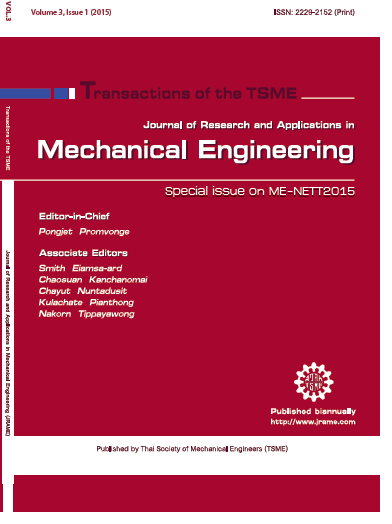Visualization of supersonic liquid diesel fuel jets
Main Article Content
Abstract
In this research, a technique for the generation of supersonic liquid diesel fuel jets is presented. Visualization technique used in this study is shadowgraph method which is able to capture both the image of supersonic liquid fuel jet and its associated shock waves. The schematic arrangement of the shadowgraph system is shown in Fig. 1. In Fig. 2, supersonic liquid diesel fuel jets generated from a mild steel nozzle with wide conical angle are presented. These jets are injected at velocity of around 2000 m/s into normal atmospheric air. The projectile impact velocity is 1100 m/s. The nozzle orifice diameter (d) is 1.0 mm and the nozzle entrance diameter (D) is 8.1 mm. With relatively wide conical angle, once the projectile has impacted on the liquid packet, the shock wave reflection inside the nozzle usually occurs. This makes the jet to leave the nozzle as a multiple pulsed jet. Fig. 2(a) shows the shadowgraph image of the supersonic liquid jets, which has two jet heads appear in the same frame of the photographic film. The first jet tip has traveled some distance and its body (or its core) is clearly seen. Closer to the nozzle orifice, the second jet tip, in the shape of a ball, appears. The second shock wave of the second jet pulse has also started to appear. If we visualize this jet some 10 μs later, the jet will appear similar to those shown in Fig. 2(b) or Fig. 2(c) where the second or third shock waves have clearly appeared.
Article Details
This work is licensed under a Creative Commons Attribution-NonCommercial-ShareAlike 4.0 International License.



